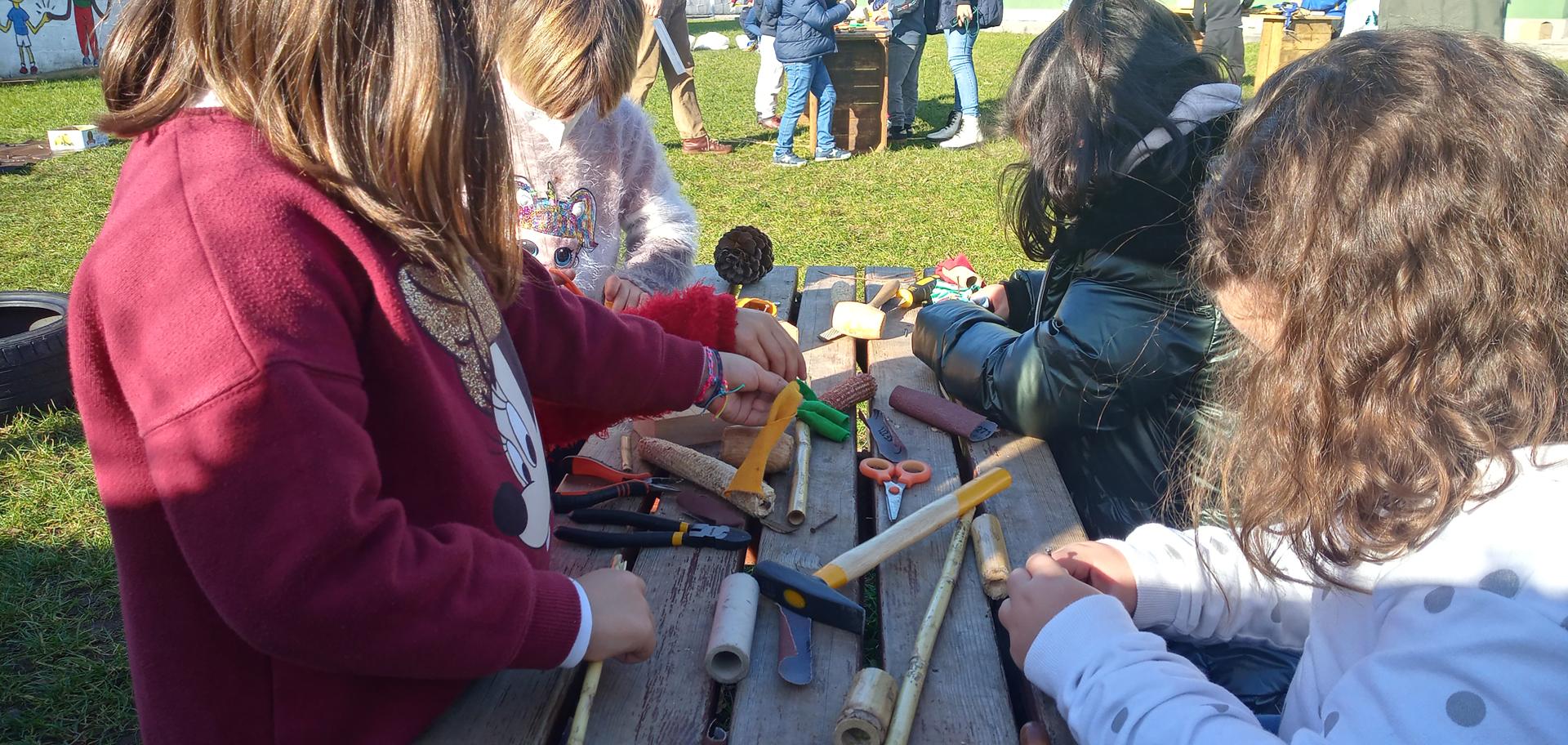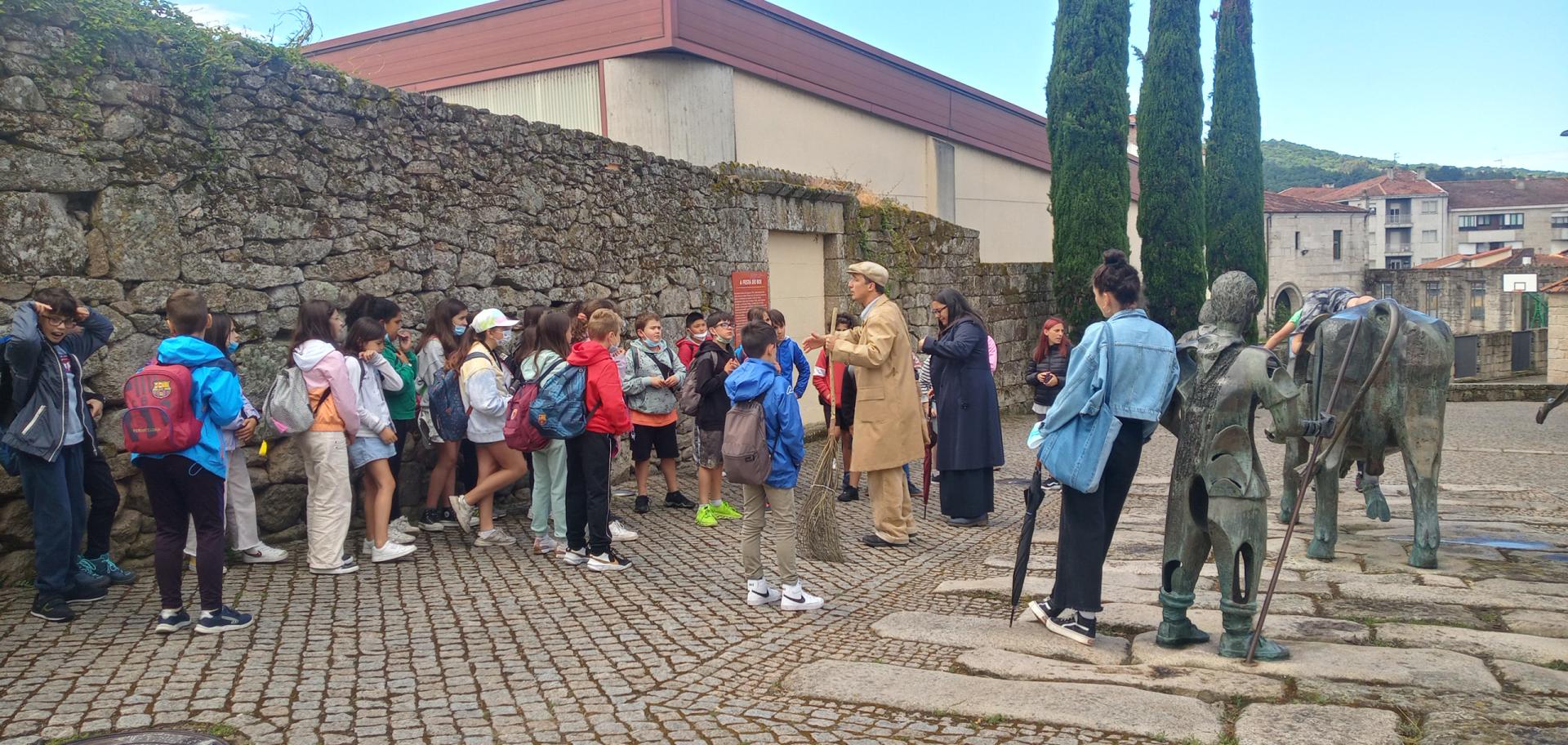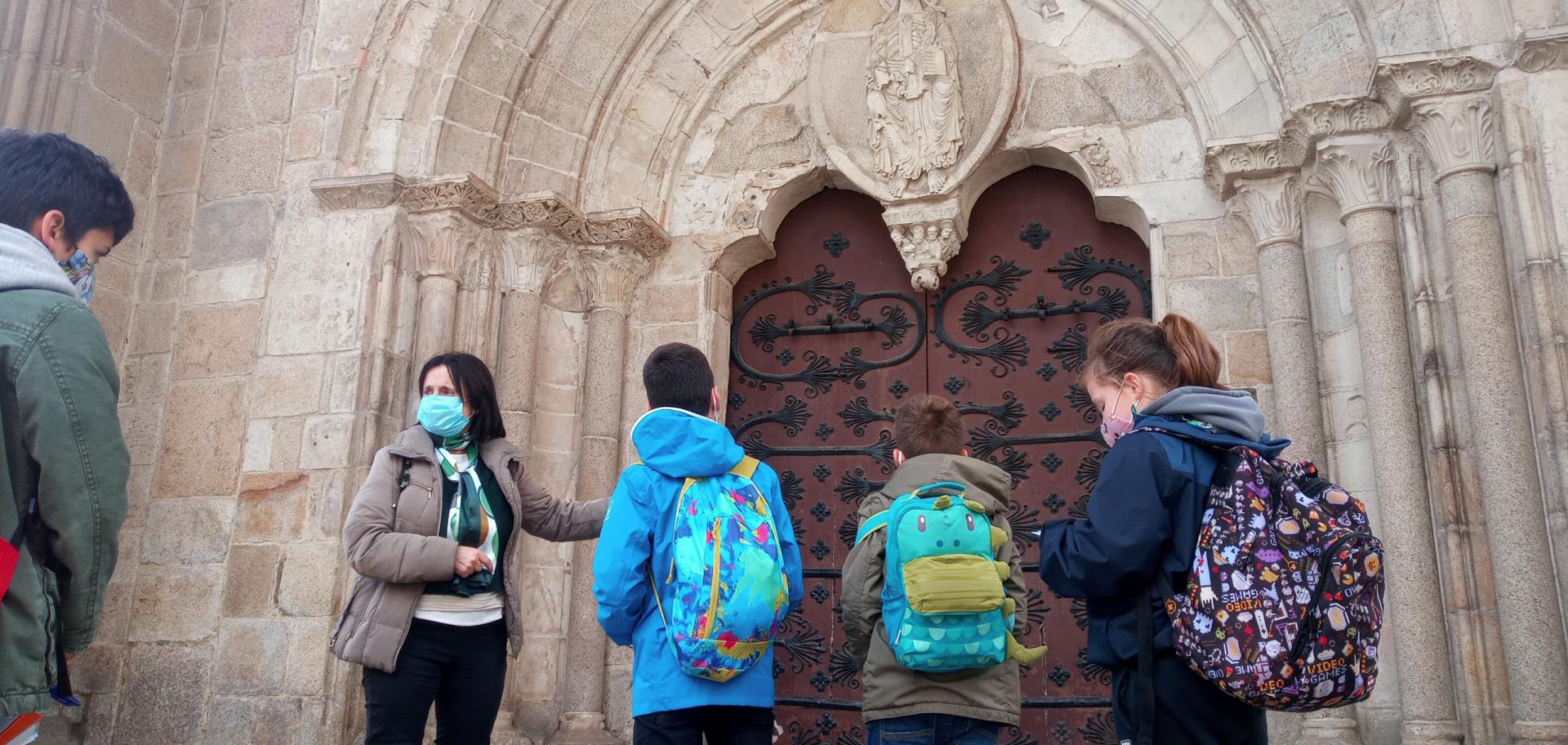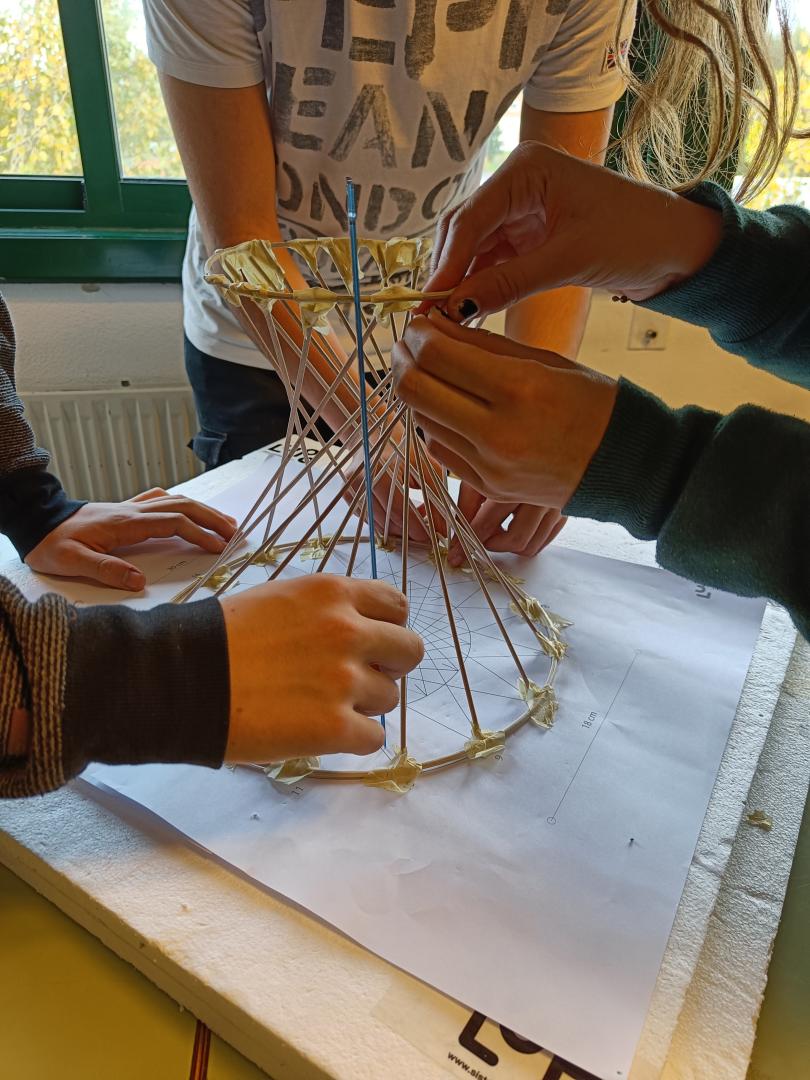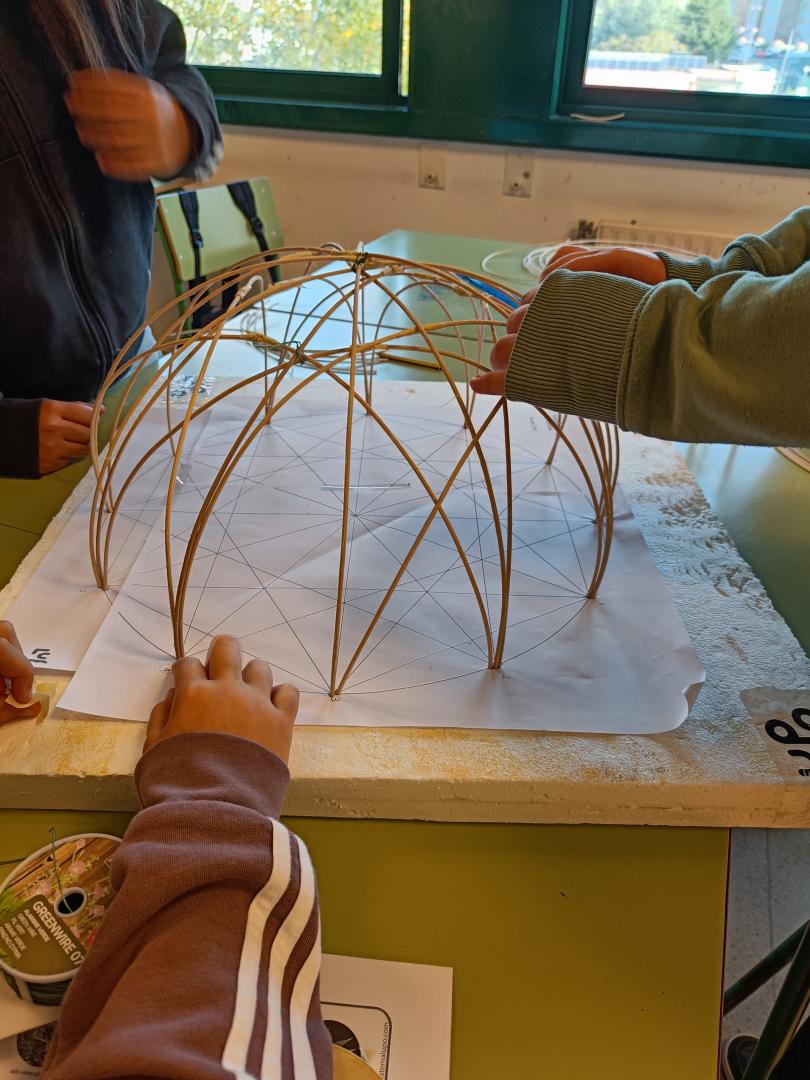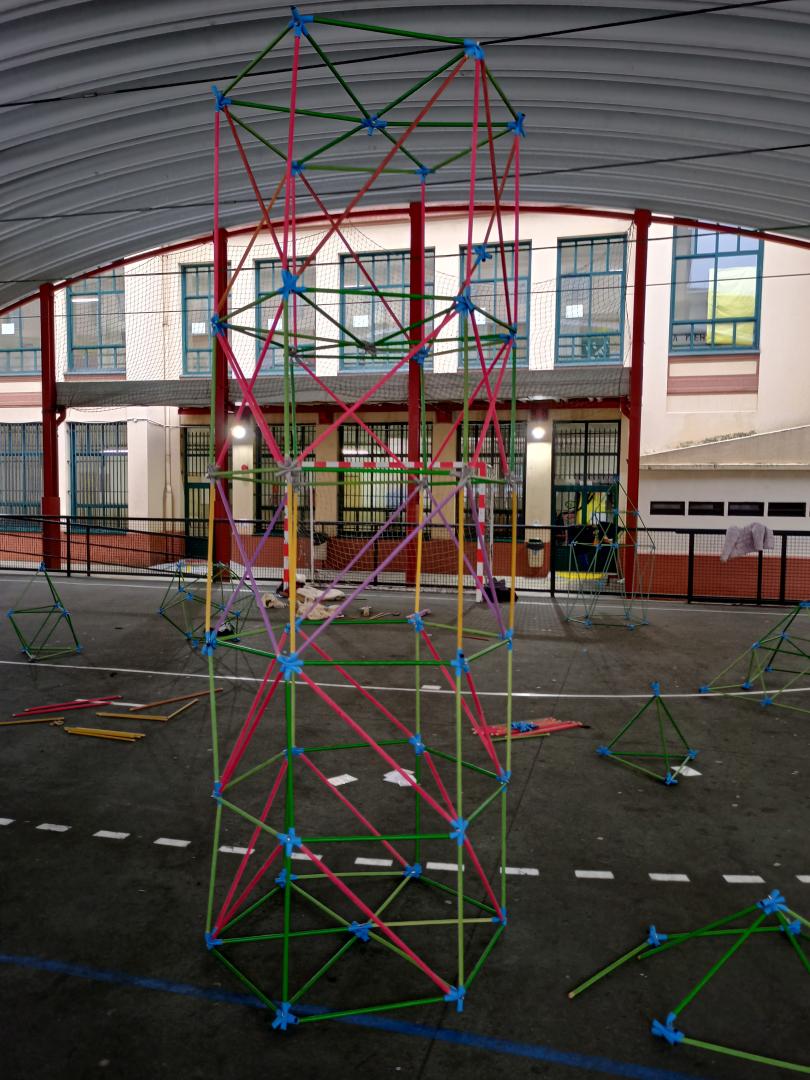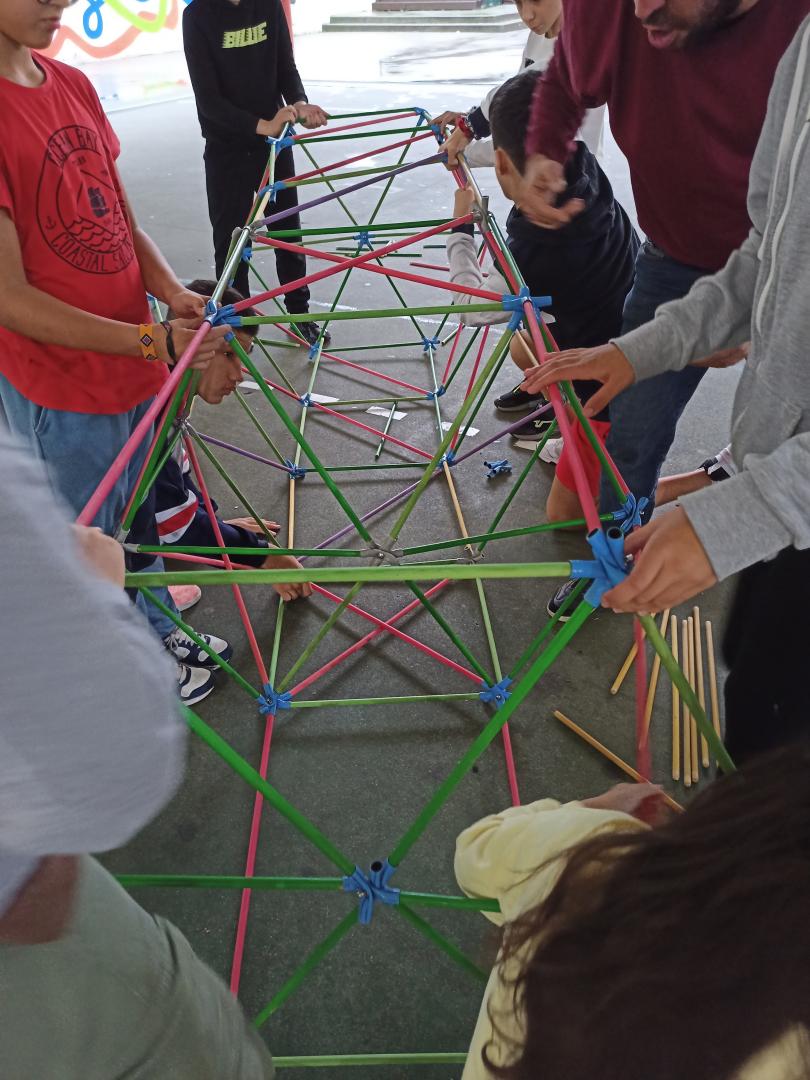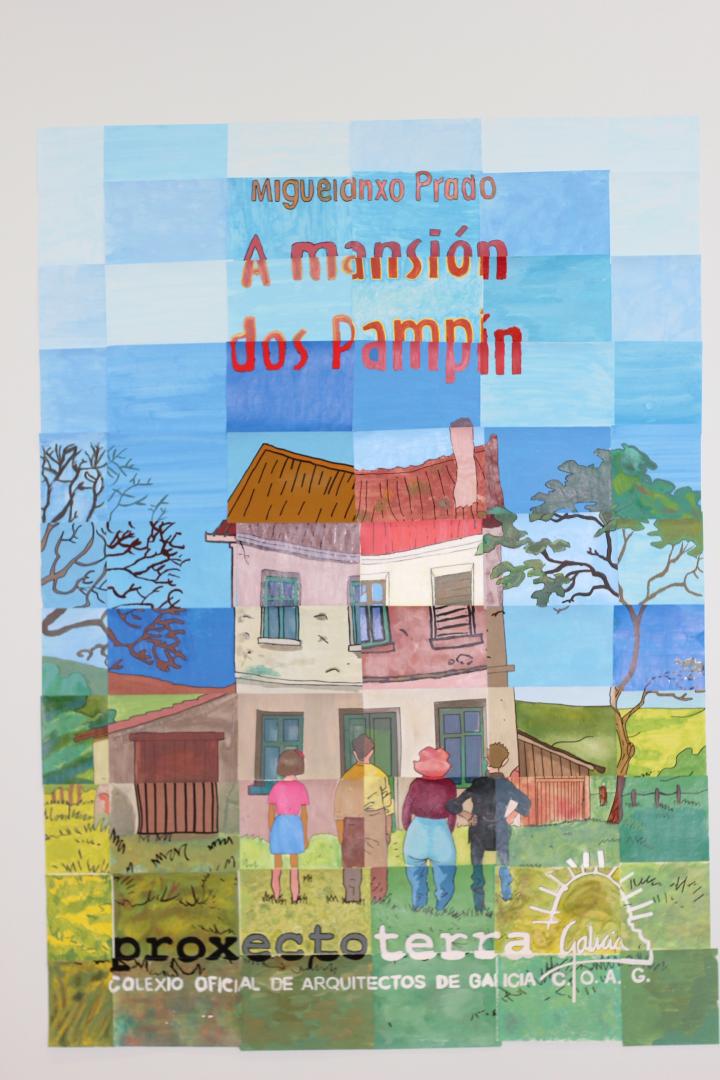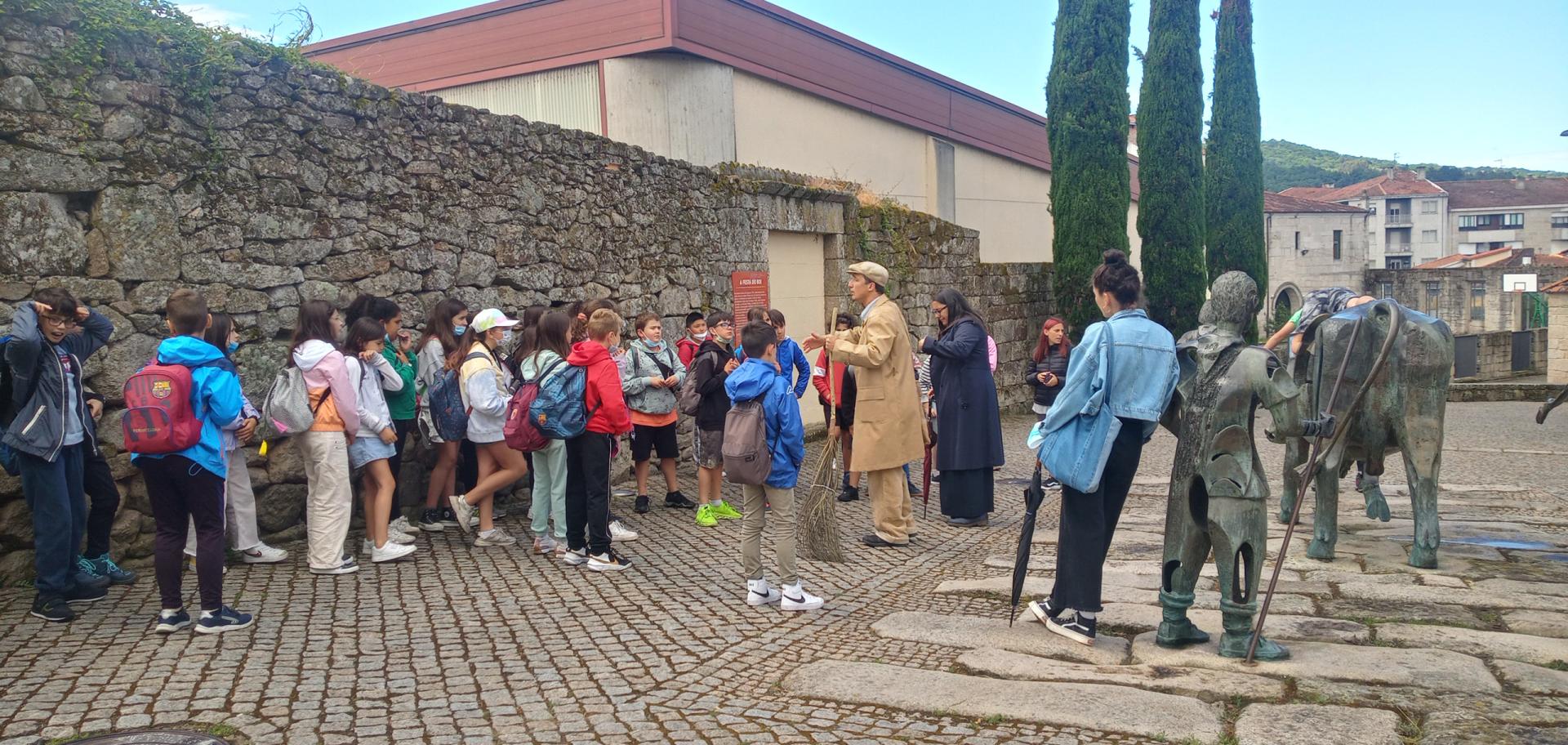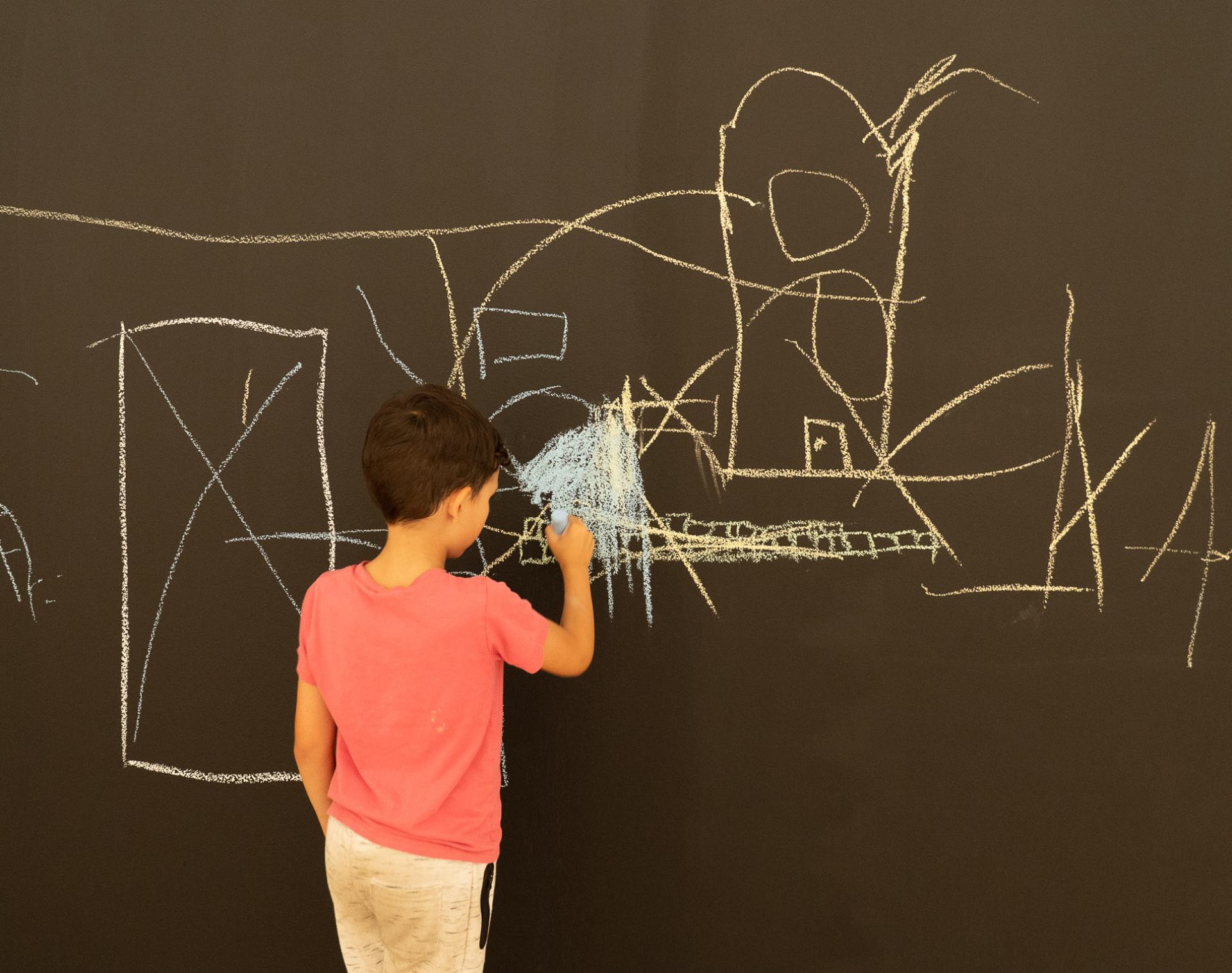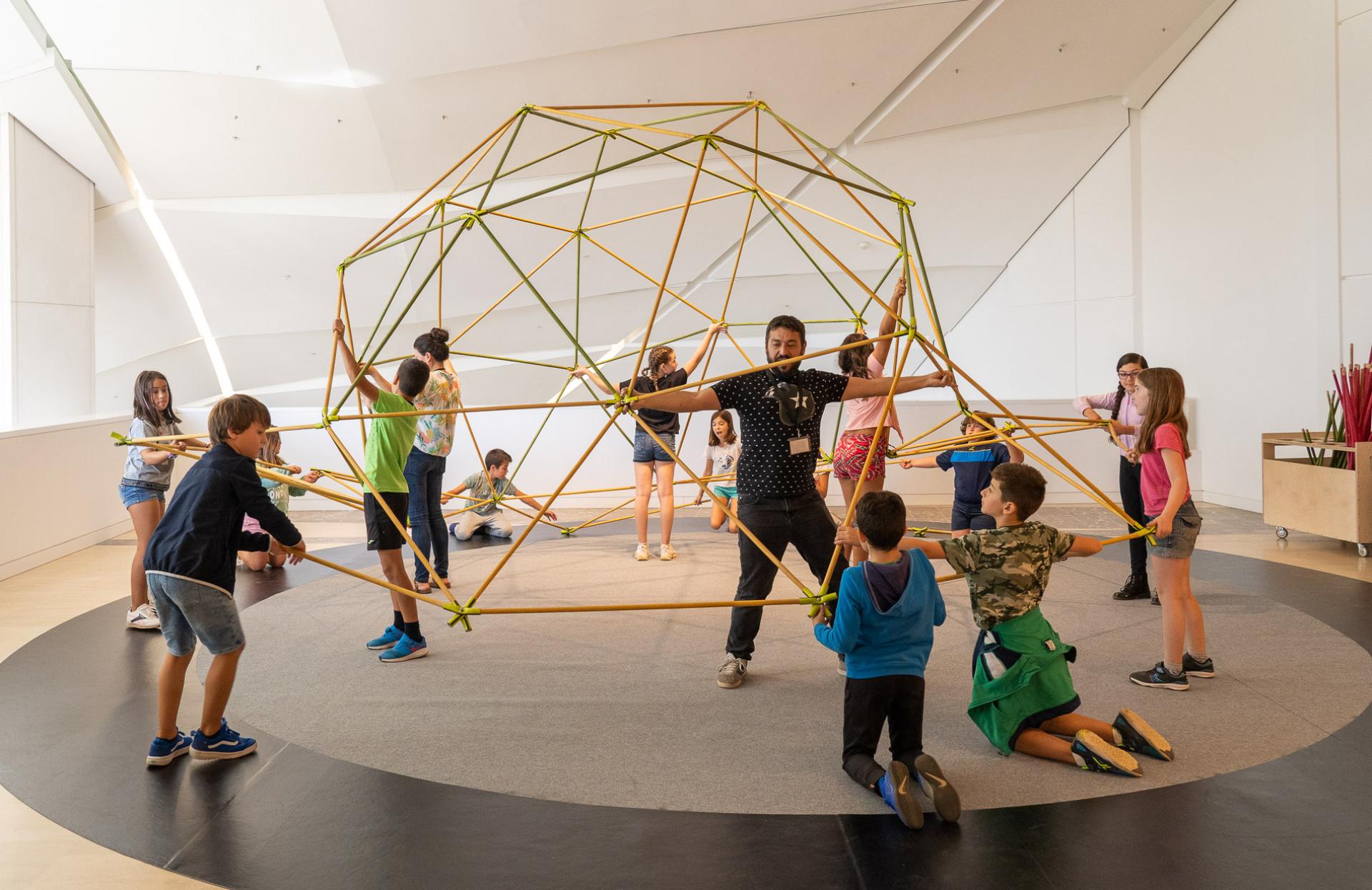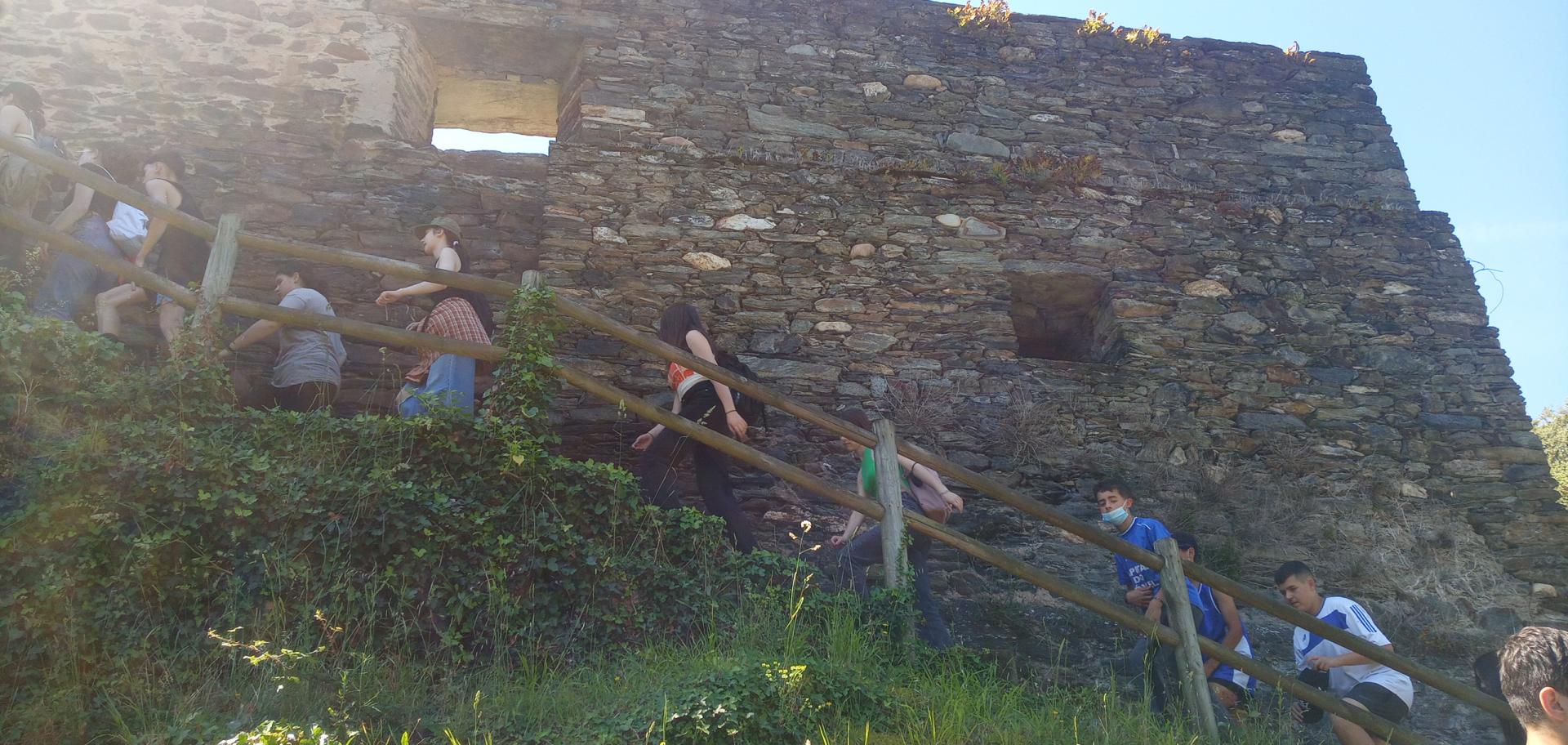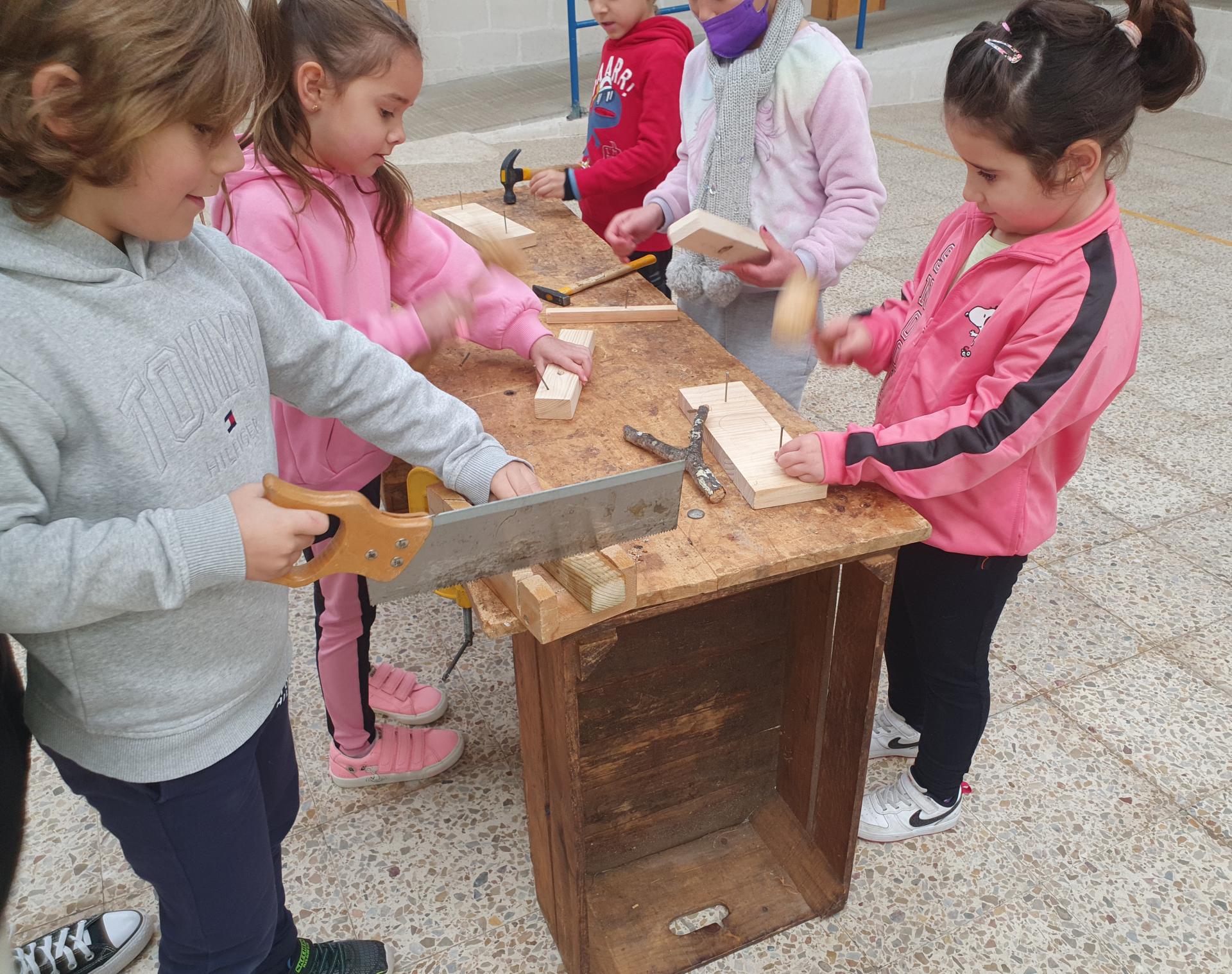ProxectoTERRA: The place where we live
Basic information
Project Title
ProxectoTERRA: The place where we live
Category
Regaining a sense of belonging
Project Description
A cooperation project with the world of education aimed at the different stages of compulsory education in order to contribute to improving the knowledge that Galician schoolchildren should have about the people, spaces and places we live in. An educative experience that can increase their critical and pro-active skills in order to achieve better living conditions in our environment.
Geographical Scope
Regional
Project Region
Galicia, Spain
Urban or rural issues
It addresses urban-rural linkages
Physical or other transformations
It refers to other types of transformations (soft investment)
EU Programme or fund
No
Description of the project
Summary
We are firmly committed to the idea of elaborating educational resources arising from the involvement and mediation of teachers at each of the educational levels, trusting they will have a permanent impact on the teaching-learning processes and helping to achieve the objectives that should be considered in the different stages of education from 0 to 18 years of age regarding knowledge and interaction with our habitat.
Space and time are the basic coordinates where we develop our lives and they are a vital reference point to construct our idea of reality. Our aim is to promote critical thinking about the spaces we inhabit, about their genesis and transformation processes over time, about the inherited traditions which we must learn about or question and about the architectural and territorial occupation practices that must be emulated or avoided in order to be in a better position to suggest and desire our spaces to inhabit. It is necessary that the students acquire a progressive autonomy that allows them to manage with wisdom and responsibility their interaction with the territory, as a scenario and support for our existence, the realm of our life.
Space and time are the basic coordinates where we develop our lives and they are a vital reference point to construct our idea of reality. Our aim is to promote critical thinking about the spaces we inhabit, about their genesis and transformation processes over time, about the inherited traditions which we must learn about or question and about the architectural and territorial occupation practices that must be emulated or avoided in order to be in a better position to suggest and desire our spaces to inhabit. It is necessary that the students acquire a progressive autonomy that allows them to manage with wisdom and responsibility their interaction with the territory, as a scenario and support for our existence, the realm of our life.
Key objectives for sustainability
Curricular Integration
Current curricula already reflect our areas of concern. We develop educational resources contextualized to the reality of our country that can complement or replace those currently available to teachers and students.
Globality
We understand that the objectives pursued can only be achieved if we involve the organizations, institutions, groups... that are interested and committed actors in the construction of the spaces we inhabit, both in financing and supporting the project and sharing initiatives and resources. The Xunta de Galicia has been co-financing Proxecto TERRA since 2003.
Current curricula already reflect our areas of concern. We develop educational resources contextualized to the reality of our country that can complement or replace those currently available to teachers and students.
Globality
We understand that the objectives pursued can only be achieved if we involve the organizations, institutions, groups... that are interested and committed actors in the construction of the spaces we inhabit, both in financing and supporting the project and sharing initiatives and resources. The Xunta de Galicia has been co-financing Proxecto TERRA since 2003.
Key objectives for aesthetics and quality
Experimentation
All the materials were previously tested in collaborating schools in different contexts (rural, urban, coastal, inland...) that acted as critical and pro-positive receptors and allowed their revision and readjustment before their final edition and sending them to the schools.
All the materials were previously tested in collaborating schools in different contexts (rural, urban, coastal, inland...) that acted as critical and pro-positive receptors and allowed their revision and readjustment before their final edition and sending them to the schools.
Key objectives for inclusion
Totality
Our universe has always been the totality of students in Galicia in the different stages of compulsory education, both in public and private schools. With a population of some 2,720,000 people, we have a school population of approximately 288,000 students between the ages of 4 and 16, enrolled in some 1,323 early childhood, primary and secondary schools in a country with the highest degree of population dispersion in Spain.
Diversity
In our proposal we have taken into account the conditions in which the educational activity is developed in the different stages:
•Limitation and diversity of resources in schools
•Diversity of students
•Teacher diversity
•Diversity of spatial references according to contours and contexts
Our universe has always been the totality of students in Galicia in the different stages of compulsory education, both in public and private schools. With a population of some 2,720,000 people, we have a school population of approximately 288,000 students between the ages of 4 and 16, enrolled in some 1,323 early childhood, primary and secondary schools in a country with the highest degree of population dispersion in Spain.
Diversity
In our proposal we have taken into account the conditions in which the educational activity is developed in the different stages:
•Limitation and diversity of resources in schools
•Diversity of students
•Teacher diversity
•Diversity of spatial references according to contours and contexts
Results in relation to category
Complementary activities
With the Guided Visits of Architecture and City and with the Territorial Exchanges, we would like the students to have first-hand experience of the spaces and territories that they study in the classrooms, putting them in direct contact with the five basic forms of territorial organization analyzed in the project: village, parish, town, city and metropolitan area.
This spatial and territorial experience extends to the geographical and cultural space of the Galicia-North Portugal Euro-region. We need to make the students aware that the processes of territorial construction transcend present and past political-administrative divisions, driven by the social, economic and cultural dynamics of the people who inhabited it and inhabit it.
Guided tours of architecture and the city
They are held in each of the seven Galician cities (7 hours), hoping that students will be able to recognize in the cities their historical process of shaping at the same time as they discover the most recent actions of urban regeneration and new examples of contemporary architecture through the experience of the spaces that provide us with significant samples of our country’s recent architecture.
With the Guided Visits of Architecture and City and with the Territorial Exchanges, we would like the students to have first-hand experience of the spaces and territories that they study in the classrooms, putting them in direct contact with the five basic forms of territorial organization analyzed in the project: village, parish, town, city and metropolitan area.
This spatial and territorial experience extends to the geographical and cultural space of the Galicia-North Portugal Euro-region. We need to make the students aware that the processes of territorial construction transcend present and past political-administrative divisions, driven by the social, economic and cultural dynamics of the people who inhabited it and inhabit it.
Guided tours of architecture and the city
They are held in each of the seven Galician cities (7 hours), hoping that students will be able to recognize in the cities their historical process of shaping at the same time as they discover the most recent actions of urban regeneration and new examples of contemporary architecture through the experience of the spaces that provide us with significant samples of our country’s recent architecture.
How Citizens benefit
Developed resources
We provide specific educational resources that expand or improve those currently available to students and teachers, completed with guided tours of the architecture and city and territorial exchanges that can be incorporated into the programming of complementary activities of educational centers.
All the resources have been elaborated by teachers of the educational level they were aimed at and presented to the educational community in training courses in which the writing teams shared the educational intentions and the work proposals included in each of them.
All the resources have been distributed free of charge to the 1.323 schools in Galicia (public, subsidized and private) of Early Childhood (997=780+217), Primary (946=746+200) and Secondary (441=326+115) Education.
We provide specific educational resources that expand or improve those currently available to students and teachers, completed with guided tours of the architecture and city and territorial exchanges that can be incorporated into the programming of complementary activities of educational centers.
All the resources have been elaborated by teachers of the educational level they were aimed at and presented to the educational community in training courses in which the writing teams shared the educational intentions and the work proposals included in each of them.
All the resources have been distributed free of charge to the 1.323 schools in Galicia (public, subsidized and private) of Early Childhood (997=780+217), Primary (946=746+200) and Secondary (441=326+115) Education.
Physical or other transformations
It refers to other types of transformations (soft investment)
Innovative character
Interdisciplinarity
The places where we live are the ideal setting to bring together the multiple visions that have emerged from the world of architecture, urban planning, geography, economics, environmental sciences, sociology, language... a perfect setting for the confluence of diverse knowledge.
A set of multiple visions will contribute to making the image we can and should have of our country more complex, complete and intense.
The places where we live are the ideal setting to bring together the multiple visions that have emerged from the world of architecture, urban planning, geography, economics, environmental sciences, sociology, language... a perfect setting for the confluence of diverse knowledge.
A set of multiple visions will contribute to making the image we can and should have of our country more complex, complete and intense.
Disciplines/knowledge reflected
Universality
It is necessary to reach out to all citizens in order to present the basic problems associated with the places we inhabit and the occupation/construction of the territory. The different stages of compulsory education are, in our opinion, the preferred area on which it should have an impact.
It is necessary to reach out to all citizens in order to present the basic problems associated with the places we inhabit and the occupation/construction of the territory. The different stages of compulsory education are, in our opinion, the preferred area on which it should have an impact.
Methodology used
Experience
To live in the spaces and places object of study and have first-hand experience. The students are guided by the previous work in the classroom, the orientations of the teaching staff and the curiosity of each one stimulated by being in the place and feeling the place. To know and give time to live, incorporating the experiences into the individual memory and the collective worldview as elements of contrast and comparison and as proof that other realities are possible.
To live in the spaces and places object of study and have first-hand experience. The students are guided by the previous work in the classroom, the orientations of the teaching staff and the curiosity of each one stimulated by being in the place and feeling the place. To know and give time to live, incorporating the experiences into the individual memory and the collective worldview as elements of contrast and comparison and as proof that other realities are possible.
How stakeholders are engaged
Inter-territoriality
Proxecto TERRA seeks to contribute to incorporating the scope of the Galicia-North Portugal Euro-region into the collective worldview of Galician students as a space for collaboration, cooperation and mutual recognition of two communities with many centuries of common history, perfectly recognizable in our territories.
Proxecto TERRA seeks to contribute to incorporating the scope of the Galicia-North Portugal Euro-region into the collective worldview of Galician students as a space for collaboration, cooperation and mutual recognition of two communities with many centuries of common history, perfectly recognizable in our territories.
Global challenges
Territorial Exchanges
They take place over two days in the Galicia-North Portugal Euroregion. Supported by the previous classroom work on the Landscape and Territorial Identity units, they allow us to approach the historical process of construction of the territory in a more complex and intense way, making us aware of its diversity and realize that the closest things are not the most unknown.
Our territory has been conscientiously built on the basis of five basic forms of settlement and organization - village, parish, town, city and metropolitan area - so we understand that its evolution and transformations over time, the object of previous study in the classrooms, must be reinforced with the presence and experience of the place.
They take place over two days in the Galicia-North Portugal Euroregion. Supported by the previous classroom work on the Landscape and Territorial Identity units, they allow us to approach the historical process of construction of the territory in a more complex and intense way, making us aware of its diversity and realize that the closest things are not the most unknown.
Our territory has been conscientiously built on the basis of five basic forms of settlement and organization - village, parish, town, city and metropolitan area - so we understand that its evolution and transformations over time, the object of previous study in the classrooms, must be reinforced with the presence and experience of the place.
Learning transferred to other parties
Reception and Permanence
Teachers are necessary and irreplaceable mediators for any initiative aimed at the world of education if they expect it to be accepted by teachers and students, be valid and remain as long as necessary until its normal integration into the education system. It is our aspiration to provide adequate resources which have always been developed by teachers of the educational level they are aimed at, easily adaptable and acceptable to most teachers, accompanied by specific training provided in more than 60 courses that more than 2500 teachers in Early Childhood, Primary and Secondary Education have already attended.
Teachers are necessary and irreplaceable mediators for any initiative aimed at the world of education if they expect it to be accepted by teachers and students, be valid and remain as long as necessary until its normal integration into the education system. It is our aspiration to provide adequate resources which have always been developed by teachers of the educational level they are aimed at, easily adaptable and acceptable to most teachers, accompanied by specific training provided in more than 60 courses that more than 2500 teachers in Early Childhood, Primary and Secondary Education have already attended.
Keywords
Universality
Globality
Diversity
Interdisciplinarity
Inter-territoriality

